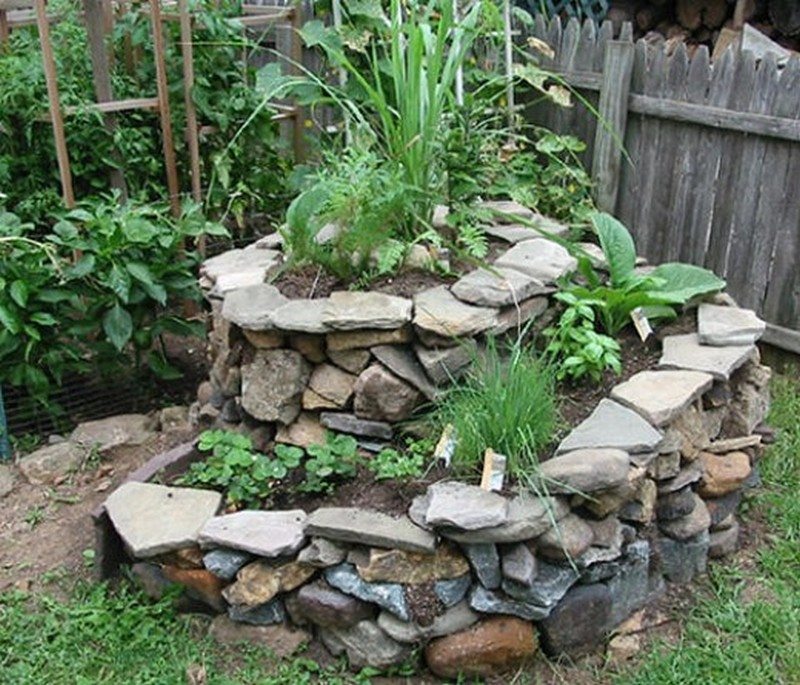How to Create a DIY Herb Spiral Garden: A Comprehensive Guide

Imagine a lush, verdant spiral of fragrant herbs in your backyard, a miniature ecosystem that not only beautifies your space but also provides a bounty of fresh, homegrown flavors. A herb spiral garden is more than just a garden; it's a work of art, a culinary treasure trove, and a testament to your green thumb. If you're ready to dive into the world of DIY gardening and create your own herb spiral garden, this guide is for you. Let's embark on this green adventure together!
Understanding the Herb Spiral Garden Design
A herb spiral garden is a vertical gardening technique that maximizes space and creates a diverse microclimate for various herbs. The spiral design allows for different levels of sunlight, moisture, and drainage, making it perfect for a wide range of herbs. Think of it as a miniature mountain in your garden, where each level offers a unique environment for different plants.
Benefits of a Spiral Garden Layout
- Space Efficiency: Perfect for small gardens or urban spaces.
- Diverse Microclimates: Different zones for sun-loving and shade-tolerant herbs.
- Aesthetic Appeal: A visually striking addition to any garden.
- Ease of Access: Herbs are easily accessible for harvesting and maintenance.
Planning Your Herb Spiral Garden
Before you start digging, let's plan your herb spiral garden. This is where the magic begins.
Choosing the Right Location
The ideal location for your herb spiral garden is a sunny spot with well-draining soil. Most herbs thrive in full sun, so aim for at least 6-8 hours of sunlight daily. Avoid areas prone to flooding or excessive shade.
Gathering Materials
You'll need:
- Bricks, stones, or recycled materials for the spiral structure.
- Compost and topsoil.
- A variety of herb plants or seeds.
- Gardening tools: shovel, trowel, gloves, and a wheelbarrow.
Building Your Herb Spiral Garden
Step 1: Mark the Spiral Layout
Using a rope or garden hose, mark out the spiral shape on the ground. The spiral should be about 6-8 feet in diameter, with a pathway that winds up to the center.
Step 2: Construct the Spiral Structure
Start building the spiral structure with bricks or stones. Begin at the center and work your way out, creating a raised spiral that gradually slopes downward. Ensure the structure is stable and well-supported.
Step 3: Fill with Soil
Fill the spiral with a mix of compost and topsoil. The top of the spiral should have well-draining soil for herbs that prefer dry conditions, while the bottom can have richer, moisture-retaining soil.
Step 4: Plant Your Herbs
Now comes the fun part—herb planting! Place sun-loving herbs like rosemary and thyme at the top of the spiral, where they'll get the most sunlight. Shade-tolerant herbs like parsley and mint can go at the bottom. Here's a quick guide:
- Top of the Spiral: Rosemary, thyme, oregano.
- Middle of the Spiral: Basil, sage, lavender.
- Bottom of the Spiral: Parsley, mint, chives.

Maintaining Your Herb Spiral Garden
Watering and Weeding
Water your herb spiral garden regularly, especially during dry spells. The top of the spiral will need less water than the bottom. Keep an eye out for weeds and remove them promptly to prevent them from competing with your herbs for nutrients.
Harvesting and Pruning
Harvest your herbs regularly to encourage new growth. Prune any leggy or overgrown plants to maintain the spiral's shape and health. Remember, the more you use your herbs, the more they'll grow!
Pest Control
Keep an eye out for pests like aphids and slugs. Use organic pest control methods like neem oil or diatomaceous earth to keep your herbs healthy and pest-free.
Conclusion
Creating a DIY herb spiral garden is a rewarding project that combines art, science, and culinary delight. With a little planning and some elbow grease, you can transform a small patch of your garden into a thriving, fragrant oasis. So, are you ready to roll up your sleeves and get started? Your herb spiral garden awaits!

FAQs
1. How much space do I need for a herb spiral garden?
A herb spiral garden typically requires about 6-8 feet in diameter. This compact design is perfect for small gardens or urban spaces.
2. What are the best herbs to plant in a spiral garden?
The best herbs for a spiral garden include a mix of sun-loving and shade-tolerant varieties. Rosemary, thyme, and oregano are great for the top, while parsley, mint, and chives thrive at the bottom.
3. How often should I water my herb spiral garden?
Water your herb spiral garden regularly, especially during dry spells. The top of the spiral will need less water than the bottom. Aim for about 1 inch of water per week.
4. Can I use recycled materials to build my herb spiral garden?
Absolutely! Recycled materials like old bricks, stones, or even concrete blocks can be used to build your herb spiral garden. Just ensure the structure is stable and well-supported.
5. How do I control pests in my herb spiral garden?
Use organic pest control methods like neem oil or diatomaceous earth to keep pests at bay. Regularly inspect your plants for signs of pests and take action promptly to prevent infestations.
0 Response to "How to Create a DIY Herb Spiral Garden: A Comprehensive Guide"
Post a Comment